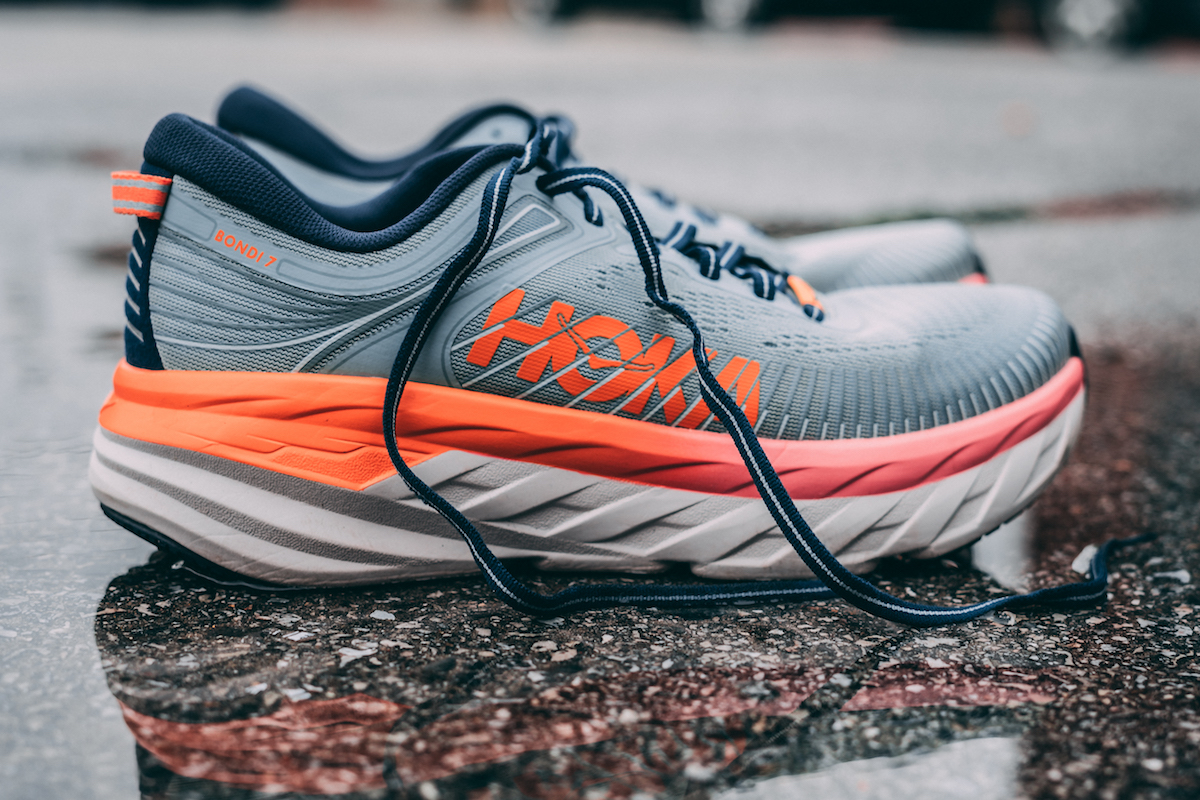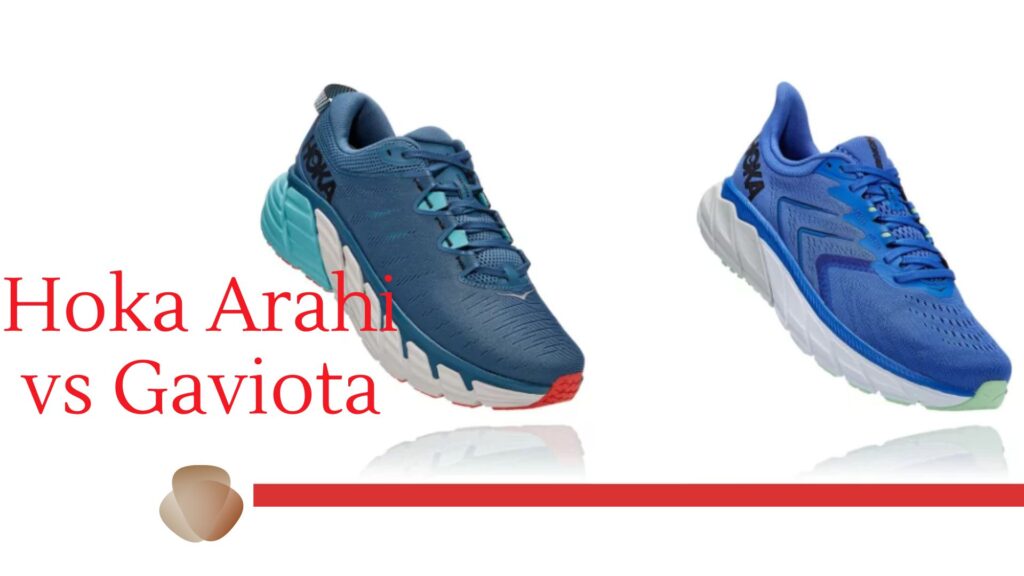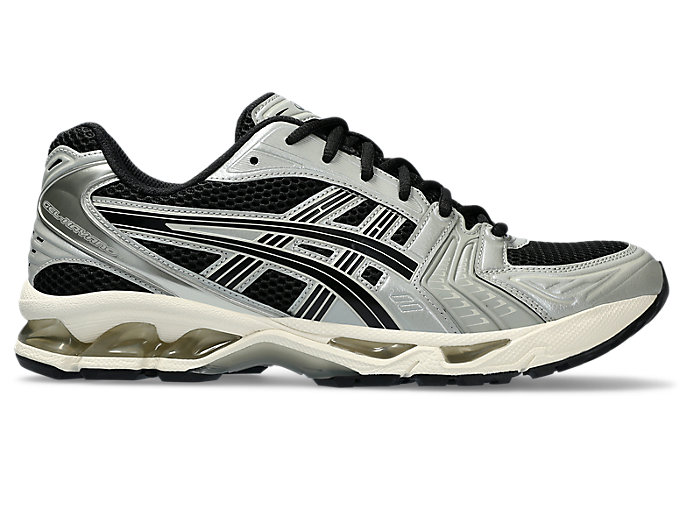Blog
Hoka Arahi vs. ASICS Gaviota: Which Stability Shoe is Right for You?
When it comes to stability running shoes, the Hoka Arahi and ASICS Gaviota are two heavy hitters that cater to runners seeking support and comfort. Both models are designed to combat overpronation, but they approach the challenge differently. Whether you’re a seasoned marathoner or a casual jogger, choosing between these shoes can feel overwhelming.
This in-depth comparison breaks down their brand philosophies, technologies, pricing and performance to help you decide which shoe deserves a spot in your rotation.
Contents
Brand Overview: Hoka vs. ASICS
Hoka One One
Founded in 2009, Hoka disrupted the running world with its maximalist cushioning and oversized midsoles. The brand quickly gained a cult following for combining plush comfort with surprisingly lightweight designs. Hoka’s ethos centers on innovation, often prioritizing shock absorption without sacrificing agility. Their shoes appeal to runners who want a “cloud-like” feel, especially for long distances.
ASICS
A Japanese brand with decades of heritage, ASICS (an acronym for Anima Sana In Corpore Sano, meaning “A Sound Mind in a Sound Body”) is synonymous with durability and structured support. Known for technologies like GEL cushioning and GUIDESOLE, ASICS targets runners seeking biomechanical precision. The Gaviota, part of their stability lineup, reflects their commitment to combining support with responsiveness.
Popular Models: Arahi vs. Gaviota
Hoka Arahi Series

The Arahi is Hoka’s flagship stability shoe, leveraging a unique J-Frame technology: a firmer foam along the midsole’s medial side, to prevent overpronation. It retains Hoka’s signature cushioned ride but trims weight through streamlined materials. Recent updates include a redesigned upper for breathability and a Meta-Rocker sole to promote smooth heel-to-toe transitions.
ASICS Gaviota Series
The Gaviota is ASICS’ max-support stability shoe, featuring the DuoMax Support System, dual-density foam that corrects pronation; paired with GUIDESOLE technology for reduced ankle strain. It’s built for runners who need robust arch support and a durable outsole. The latest Gaviota 6 introduces FF BLAST™ ECO foam, enhancing energy return while using recycled materials.
Key Features Comparison
1. Cushioning and Ride Feel
-
Hoka Arahi: Offers a plush, forgiving ride thanks to its compression-molded EVA midsole. The focus is on cushioning without bulk, making it ideal for long runs.
-
ASICS Gaviota: Uses FF BLAST™ ECO foam for a responsive, springy feel. The GEL cushioning in the heel absorbs impact, suited for runners who prefer a firmer, energy-returning platform.
2. Stability Technology
-
Arahi’s J-Frame: A lightweight, firmer foam frame guides the foot without rigid posts, appealing to those who dislike traditional medial posts.
-
Gaviota’s DuoMax: A denser foam slab on the medial side offers aggressive support, ideal for severe overpronators.
3. Weight
-
Arahi: Weighs around 9.1 oz (Women’s) / 10.3 oz (Men’s)—lightweight for a stability shoe.
-
Gaviota: Slightly heavier at 9.8 oz (Women’s) / 11.3 oz (Men’s) due to its structured build.
4. Fit and Upper Design
-
Arahi: Engineered mesh upper with strategic padding for a snug, breathable fit. The wide toe box accommodates splay.
-
Gaviota: Reinforced knit upper with external heel counters for lockdown. Narrower fit, best for medium to narrow feet.
5. Outsole Durability
-
Arahi: Uses Hi-Abrasion Rubber in high-wear zones. While grippy, some users report quicker wear on rugged terrain.
-
Gaviota: ASICS’ AHAR (High Abrasion Rubber) outsole excels in longevity, ideal for road runners logging heavy mileage.
Price Comparison
-
Hoka Arahi: Priced around $140–150, aligning with premium running shoes.
-
ASICS Gaviota: Slightly cheaper at $130–140, often discounted due to ASICS’ frequent promotions.
Verdict: The Gaviota offers better value for budget-conscious buyers, while the Arahi justifies its cost with innovative weight savings.
Quality and Durability
Hoka’s focus on lightweight materials sometimes compromises longevity: expect the Arahi to last 300–400 miles. The Gaviota, with its rugged outsole and dense foam, often surpasses 400–500 miles, making it a workhorse for high-mileage runners.
Target Audience
Choose Hoka Arahi If You…
-
Prefer a lightweight, cushioned shoe for tempo runs or marathons.
-
Have mild to moderate overpronation.
-
Value a roomy toe box and breathable design.
Choose ASICS Gaviota If You…
-
Need maximum support for severe overpronation.
-
Prioritize durability for daily training.
-
Enjoy a responsive, firm ride underfoot.
Pros and Cons
| Hoka Arahi | ASICS Gaviota |
|---|---|
| ✅ Ultra-lightweight | ✅ Exceptional durability |
| ✅ Plush, cloud-like cushioning | ✅ Strong arch support |
| ❌ Less durable outsole | ❌ Heavier build |
| ❌ Limited color options | ❌ Narrow fit may not suit wide feet |
Final Verdict
Both shoes excel in stability but cater to different preferences. The Hoka Arahi is your go-to for a nimble, cushioned ride, perfect for runners prioritizing comfort over long distances. The ASICS Gaviota shines with its durability and structured support, ideal for those needing rigorous motion control.
FAQ Section
Q: Which shoe is better for flat feet?
A: The Gaviota’s DuoMax system provides stronger arch support, making it better for flat feet.
Q: Can I use the Arahi for walking?
A: Absolutely! Its cushioning and rocker sole make it versatile for walking or standing all day.
Q: Are these shoes true to size?
A: The Arahi runs slightly large; consider half-size down. The Gaviota fits true but narrow—wide-footed runners may need to size up.
Q: Which has better breathability?
A: The Arahi’s mesh upper offers superior airflow compared to the Gaviota’s reinforced knit.
Q: Do either work for trail running?
A: Both are designed for roads. For trails, opt for Hoka’s Speedgoat or ASICS’ Gel-Venture.
Conclusion
Your choice between the Hoka Arahi and ASICS Gaviota boils down to priorities: lightweight cushioning vs. durable support. Test both if possible, and consider your foot shape, mileage, and pronation severity. Either way, you’re investing in a top-tier stability shoe that’ll keep you moving confidently.





